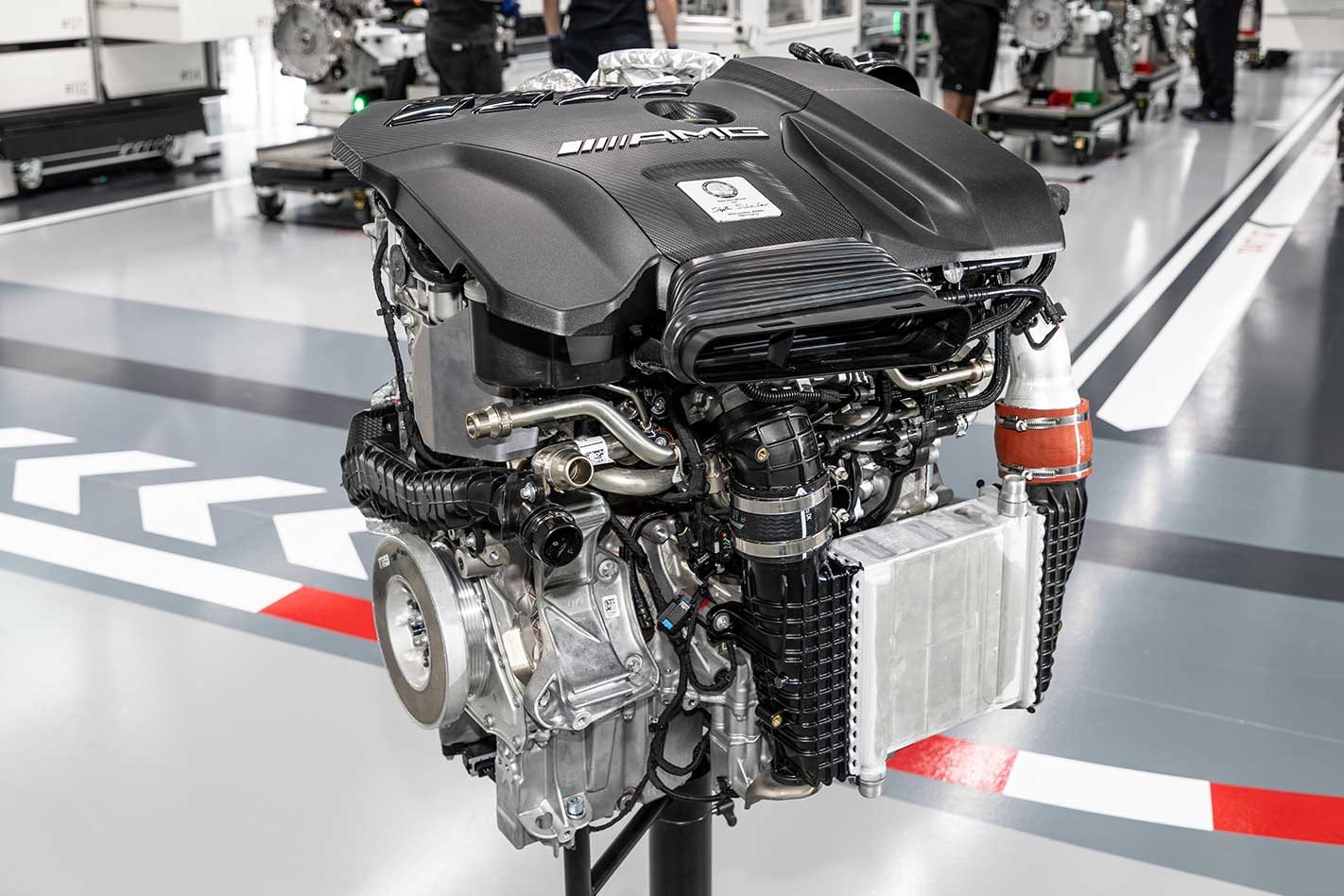Remember the last time you saw an ‘only milk and juice come in 2.0 litres’ sticker on the back of something like an XR6? Well, it turns out a 2.0-litre engine can now use that exact milk to, well, eat an XR6 for breakfast.
See, the incoming AMG A45 S is leaving the already supercar-killing power of its predecessor well truly behind thanks to AMG’s new M139 engine.
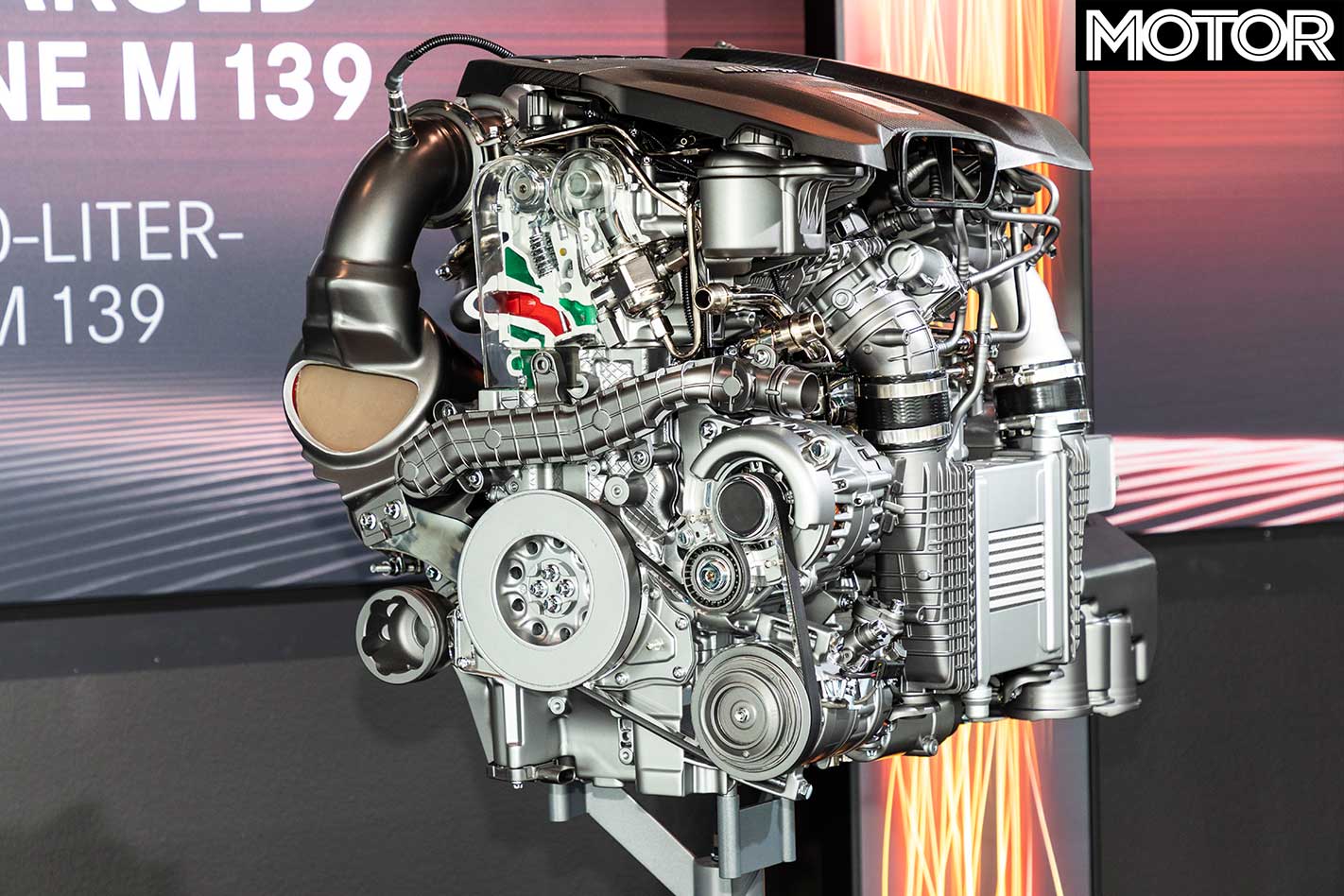
At 1991cc, the turbocharged engine is effectively the same capacity as the likes of Honda’s 228kW Civic Type R engine, but Affalterbach engineering know-how (and likely the A45 S’s higher expected price) has resulted in an incredible 310kW being pumped out of those four friction-reducing Nanoslide-coated cylinders.
A couple of minor changes to the dimensions don’t give the power game away. An extra millimetre of bore makes for 83.0mm while the stroke remains 92.0mm, but the compression ratio is up to 9.0:1 from the preceding M133’s 8.6.
Most notably to the eye, this new 160.5kg hunk of alloy, oil and other materials and fluids will be fitted ‘back-to-front’ in the A45 S, with the exhaust manifold and turbocharger at the rear near the firewall, and the intake system located at the front. This not only requires less plumbing, but also allows for a more aerodynamic front end with less headroom required under the bonnet for ducts and peripherals.
Visually, that’s where the most obvious aspects of the new AMG engine end, but the technical details Affalterbach has confirmed already have boost addicts salivating. That peak of 310kW is reached at a relatively low 6750rpm (the M139 has a 7200rpm redline!), but the majority of the engine’s 500Nm of torque is supposedly available across most of the tachometer, peaking between 5000 and 5250rpm.
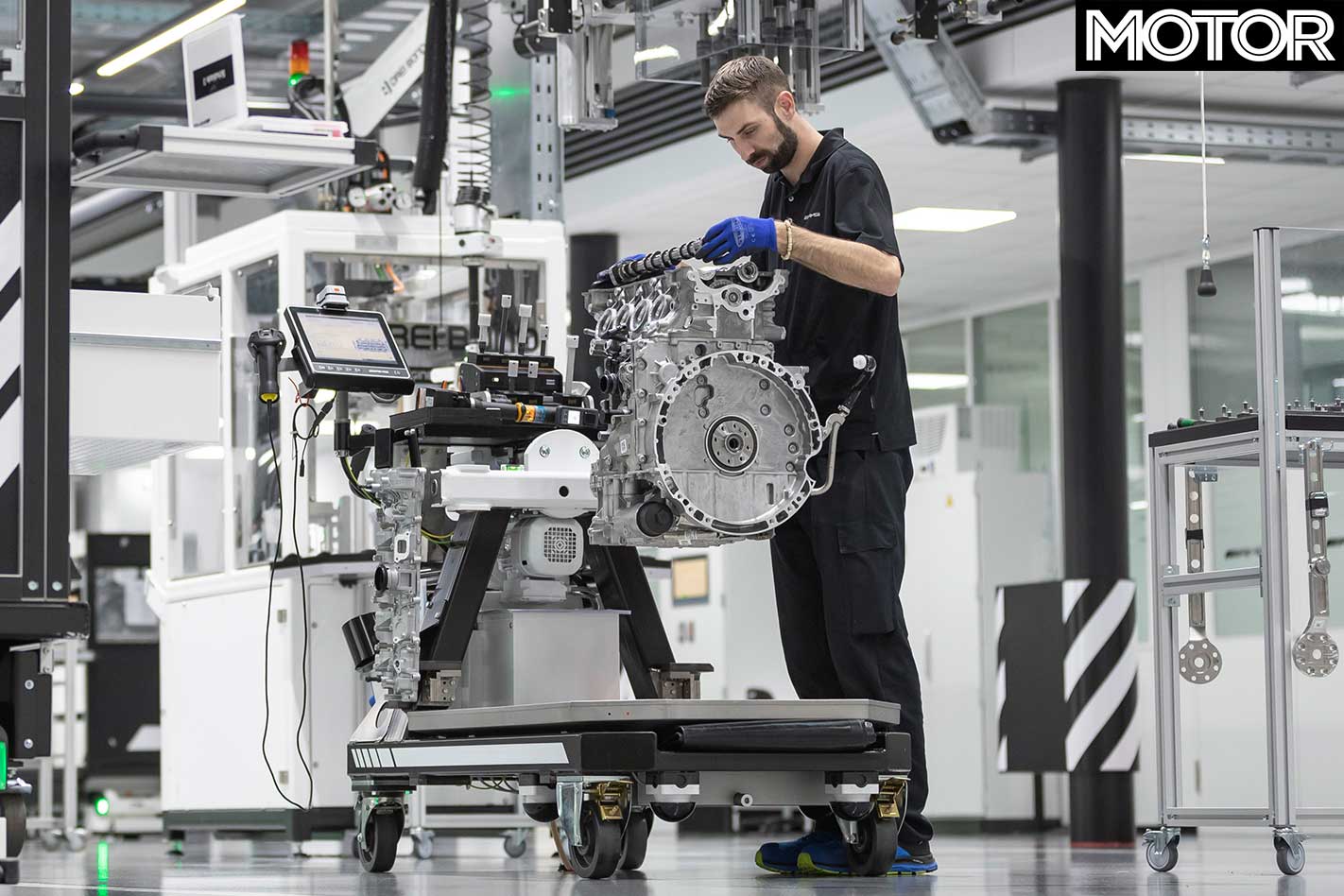
The engineers’ intention was to create ‘immediate’ throttle response and the brand even goes as far as comparing the M139 to the feel of a naturally-aspirated engine.
But atmo this engine is not, with a twin-scroll turbocharger running roller bearings to reduce the turbine’s friction and allow it to rotate up to 169,000 times per minute. At peak pressure, the M139’s turbo is forcing air into the engine at a massive 30.5psi (or 2.1 bar).
Boost is controlled by a new electronic wastegate, which uses charge pressure, throttle flap position and any knocking to determine precisely how much pressure to relieve. The turbo itself is kept cool with not only oil and water, but also fresh air directed from the radiator through the engine cover and bonnet ducts, a method first used for the AMG GT’s vee-mounted turbos.
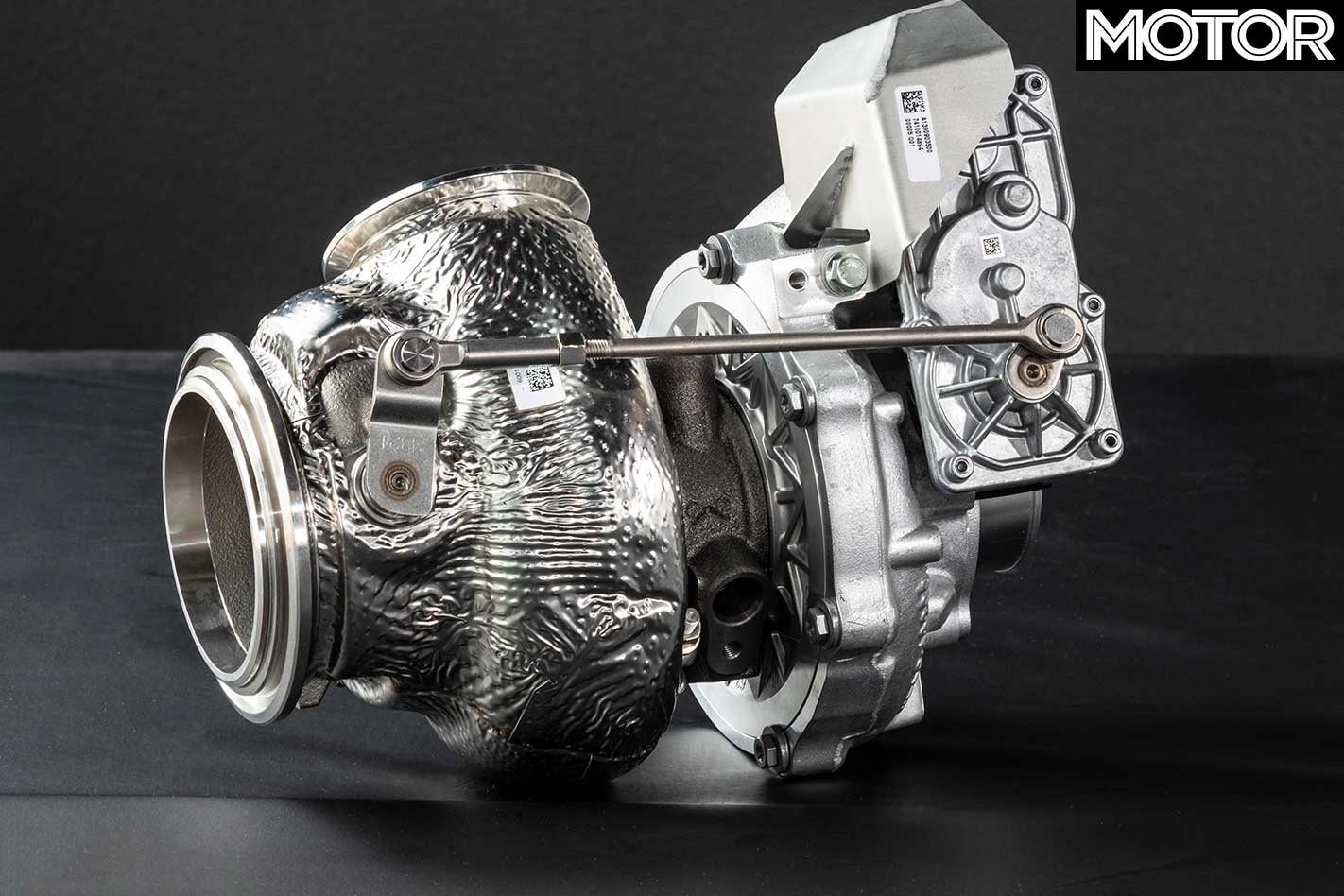
While the turbo is pushing in huge volumes of air, injectors are forcing fuel into the chambers at up to 2900psi. A second stage of injection supplies more fuel via the intake manifold, but at 97psi.
The cooling system is one interconnected circuit which comprises a traditional radiator and intercooler, plus an additional wheel arch-mounted radiator. It also integrates the transmission oil cooler, with a gearbox-mounted exchanger. Even the ECU has a specifically directed airflow to cool it.
Given the previous A45 ran a 12.54sec 0-400m when tested by MOTOR, we can expect all this new efficiency and cooling to provide us with another set of numbers to blow away us or any stocker XR6 Turbo that decides to challenge it at the strip.
“S” or no “S”?
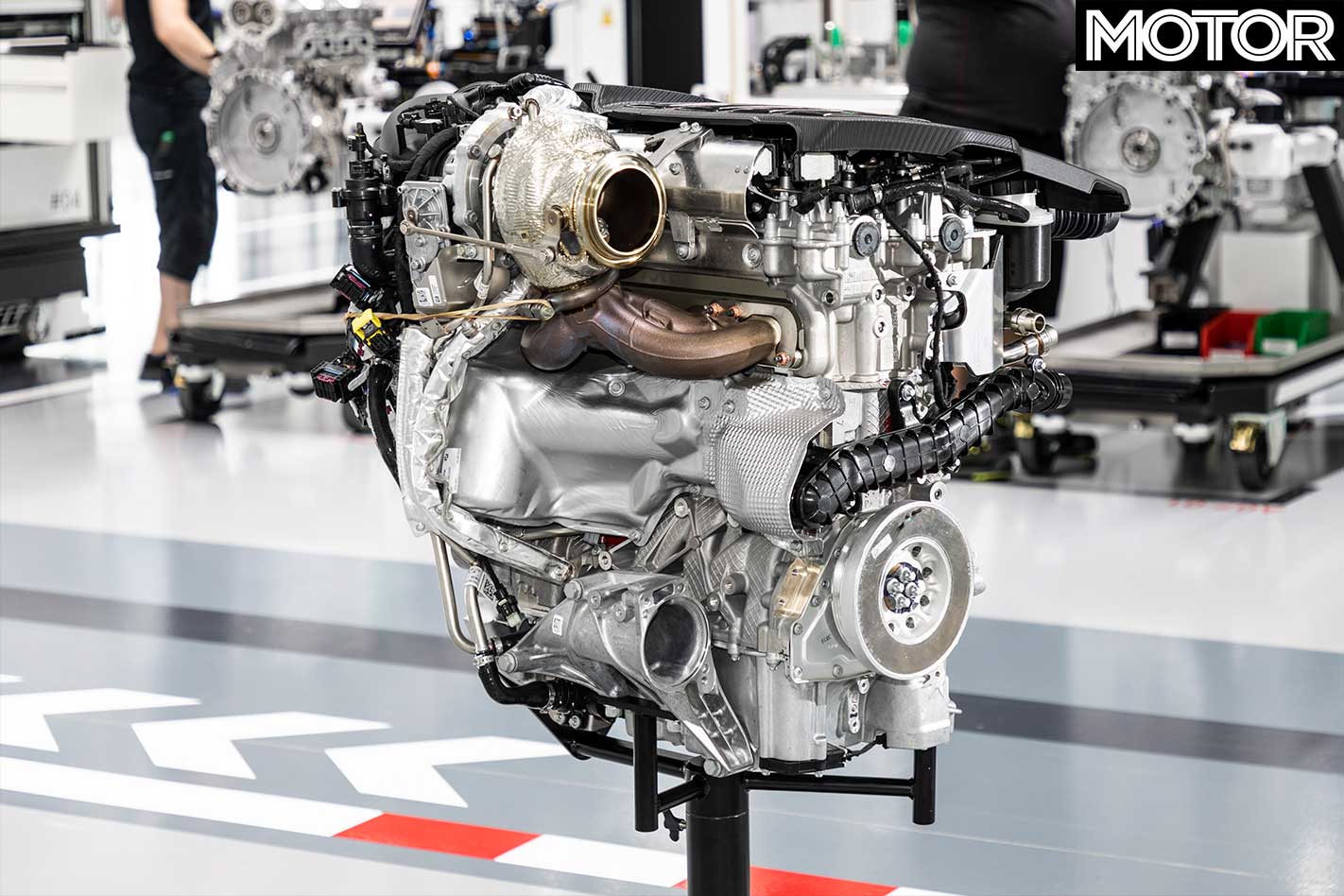
AMG says there will be a lower-spec A45, sans ‘S’ badge with ‘only’ 285kW/480Nm, but it’s uncertain whether Australia will get this version.


